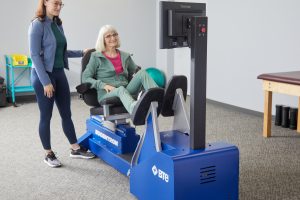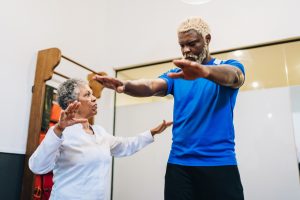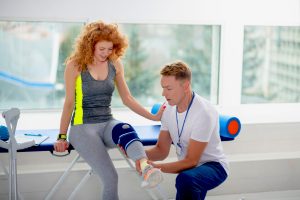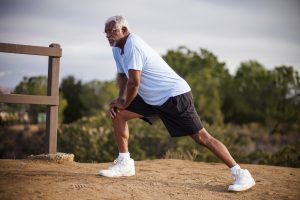-

Eccentric training is transforming Parkinson's disease rehabilitation by addressing motor challenges with groundbreaking results. Discover how high-intensity eccentric resistance training can improve strength, mobility, and quality of life for PD patients. Learn about the latest research and practical strategies for physical and occupational therapists.
-

Learn how to do the Unterberger Test, interpret results, and enhance your balance assessments with data-driven balance assessment devices.
-

A recent study examined the outcomes of an eccentric-focused physical therapy program for post-hip fracture recovery. Participants using BTE's Eccentron showed positive improvements in lean muscle mass, force production, and functional abilities.
-

Balance assessments play a key role in gauging your stroke patient's fall risk, functional abilities, vestibular impairment, proprioception, and more. Read on for a breakdown of five essential balance assessments in stroke rehab: Romberg, Unterberger, Berg Balance Test, timed up and go, and functional reach test.
-

Here's why you should integrate neuromuscular reeducation in sports physical therapy programs. NMR helps your athletes recover from and prevent injuries while also training neuromuscular control. Keep reading for the whys and hows of neuromuscular reeducation in sports.
-

Eccentric contractions have so many unique properties that make it ideal for rehabilitation and training. And we’re not just talking musculoskeletal benefits (although this side alone is compelling enough). Eccentrics also engage the neurological system to promote healing, learning, and neuromuscular control, too.






